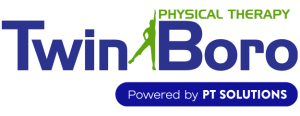The hip joint is one of the largest joints in the body. It is composed of one osseous (contains bone) joint. The hip is built for weight bearing and movement in several different planes. The stability of the hip joint comes from the capsule, ligaments, muscle and a cartilaginous tissue called the labrum.
The hip is a ball and socket joint. It is formed by the head of the femur (thigh bone), which sits in the acetabulum, a part of pelvis. The hip can experience disease, including avascular necrosis and slipped femoral epiphysis.
Slipped Capital Femoral Epiphysis
Slipped capital femoral epiphysis is a condition of the hip that primarily affects adolescents. Slipped capital femoral epiphysis is relatively common, it occurs when the ball at the upper end of the femur (thigh bone) slips off the femur in a backward direction.
Slipped Capital Femoral Epiphysis occurs due to weakness at the growth plate – the area of bone responsible for the generation of new tissue, as a young person’s limbs grow. Because this condition is related to the growth plate, it primarily occurs during periods of quick growth, like directly after puberty begins.
Some people with slipped capital femoral epiphysis may experience the following symptoms:
- Pain in the hip that lasts for several weeks
- Walking with a limp
- Inability to bear weight on the effected leg
- The effected leg may appear shorter than the other leg
- Loss of range of motion of the hip and leg
- Loss of hip flexion, and inability to rotate the hip inward
- Inflammation in the hip
- Muscle spasm in the hip
Slipped capital femoral epiphysis typically requires surgery. The main concern is to prevent any additional displacement of the femoral head until the growth plate is repaired. If the growth plate is not repaired properly, it can disrupt the growth of the leg leading to a limb that is shorter than its counterpart. Treatment for this condition should be initiated as soon as possible.
Typically a surgical intervention to fix the femoral head in place with pins or screws will be recommended. Avascular Necrosis can develop as a side effect of slipped capital femoral epiphysis.
Physical Therapists are professionals, educated and trained to administer interventions. As defined by The Guide to Physical Therapist Practice, interventions are the skilled and purposeful use of physical therapy methods and techniques to produce changes consistent with the diagnosis, prognosis and the patient or client’s goals.
Physical Therapy can be beneficial for patients suffering from diseases of the hip improving strength and stability, and recover following a surgical procedure. Common Physical Therapy interventions in the treatment of Hip Disease include:
- Manual Therapeutic Technique (MTT): hands on care including soft tissue massage, stretching and joint mobilization by a physical therapist to improve alignment, mobility and range of motion of the knee and hip. Use of mobilization techniques also help to modulate pain.
- Therapeutic Exercises (TE) including stretching and strengthening exercises to regain range of motion and strengthen muscles of the knee and lower extremity to support, stabilize and decrease the stresses place on the bursa and tendons of the hip joint.
- Neuromuscular Reeducation (NMR) to restore stability, retrain the lower extremity and improve movement techniques and mechanics (for example, running, kneeling, squatting and jumping) of the involved lower extremity to reduce stress on the hip joint in daily activities.
- Modalities including the use of ultrasound, electrical stimulation, ice, cold laser and others to decrease pain.
- A home program that includes strengthening, stretching and stabilization exercises and instructions to help the person perform daily tasks and advance to the next functional level.
Avoiding the activities that produce the pain or stress the involved joint is the first line of treatment.
- RICE: Rest, Ice, Compression Elevation should be used to reduce the stress on the bones.
- NSAIDS (Non steroidal anti-inflammatory drugs) to reduce pain and inflammation.
- Injection of steroids may be necessary to reduce inflammation in the hip joint
- Immobilization, strapping or bracing may be beneficial to rest the joints and promote healing.

